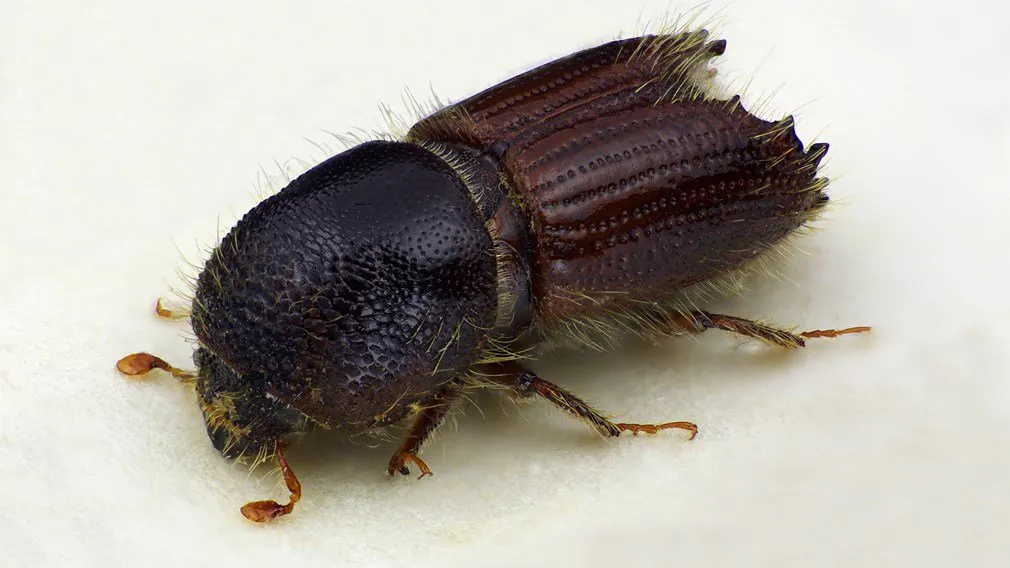In a large part of the country, the number of the spruce bark beetle is increasing. Vestfold has seen the biggest increase. However, scientists are not sure how the population will develop and what to expect in the coming year.
The national monitoring of the spruce bark beetle shows that the catches of the printer in the last year increased in all surveyed areas, except for Vest-Agder. This is probably due to the fact that many spruce trees were significantly weakened after the drought in summer 2018.
The annual registration of the bark beetle is carried out by means of odor traps and is carried out at the request of the Ministry of Agriculture and Food. The works are carried out in cooperation with forest authorities in 13 voivodships or their parts. The purpose of monitoring is to control the population of the spruce bark beetle and the growing risk of forest damage.
Surprise and prolonged drought increase the risk of harm
The spruce bark beetle ( Ips typographus ) is the only pest that can attack and kill fresh spruce trees on a large scale. The species is common in southern and eastern Norway, as well as in Trøndelag and Nordland south of Saltfjellet. The spruce bark beetle reproduces mainly in fresh wind and other forms of dead and weakened spruces. When bark beetle densities are low, they are unable to colonize living trees because trees are protected by various defense mechanisms. Problems arise during big ones gusts of wind and after periods of drought. Such events can trigger bark beetle outbreaks on living trees, and outbreaks can last for years until supplies of weakened trees are exhausted or until the drought period ends and the trees regain their natural resistance.
Most beetles and most lesions in Vestfold
After the dry summer of 2018, bark beetle levels in Vestfold have gradually increased. In the old district on the west side Oslo fjord On average, over 20 bark beetles were recorded per trap. Levels are still only 000 percent of the level at the end of the 69s eruption and 70 percent of the 75 level.
Vestfold has the most damage to forests this year, despite lower beetle levels than during the last epidemic. The reason may be that poor bedrock caused by drought in some parts of Vestfold caused more tree weakening than in other regions after the drought in summer 2018. The areas currently under attack are the same ones that were hit hard by the bark beetle epidemic in the 70s. Of the twentieth century.
Photo: Karsten Sund / Natural History Museum / NIBIO
Source: regjeringen
Also read: 250 in Viken invited to participate in a public health survey



